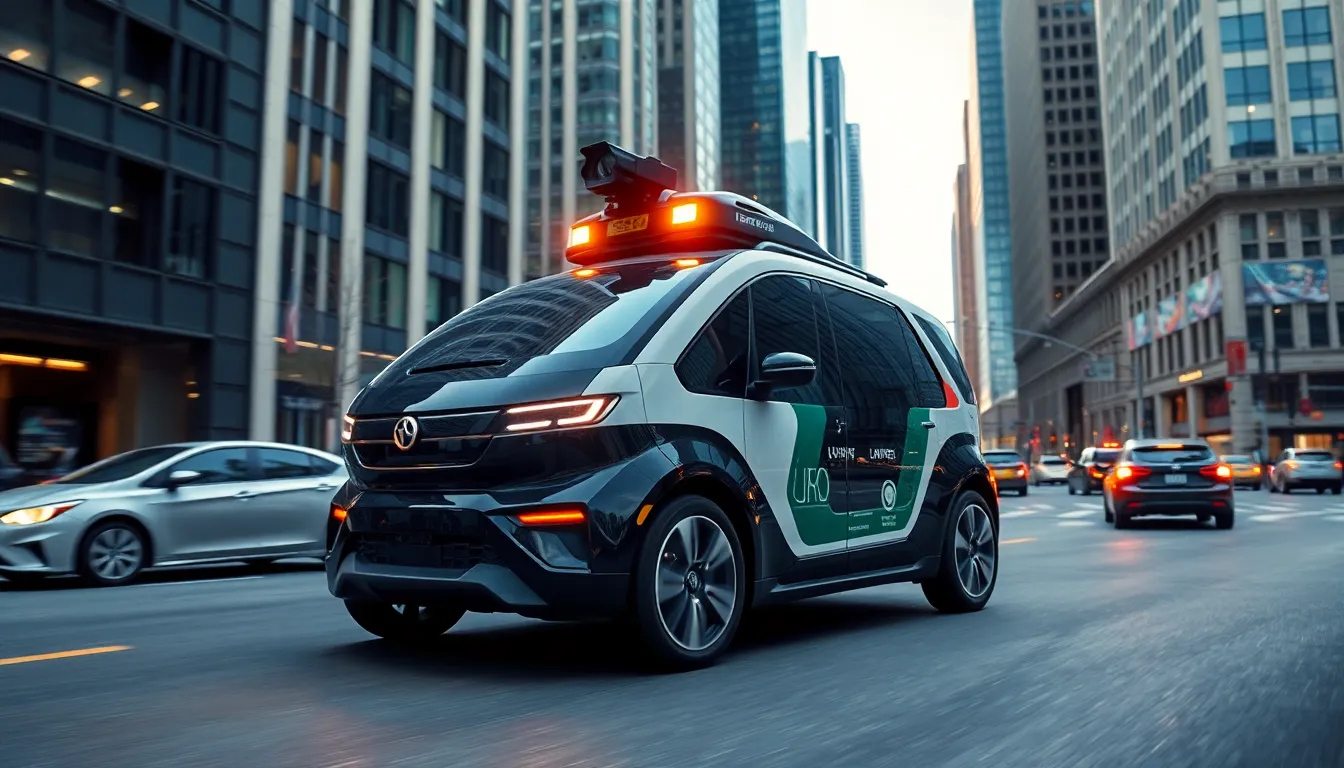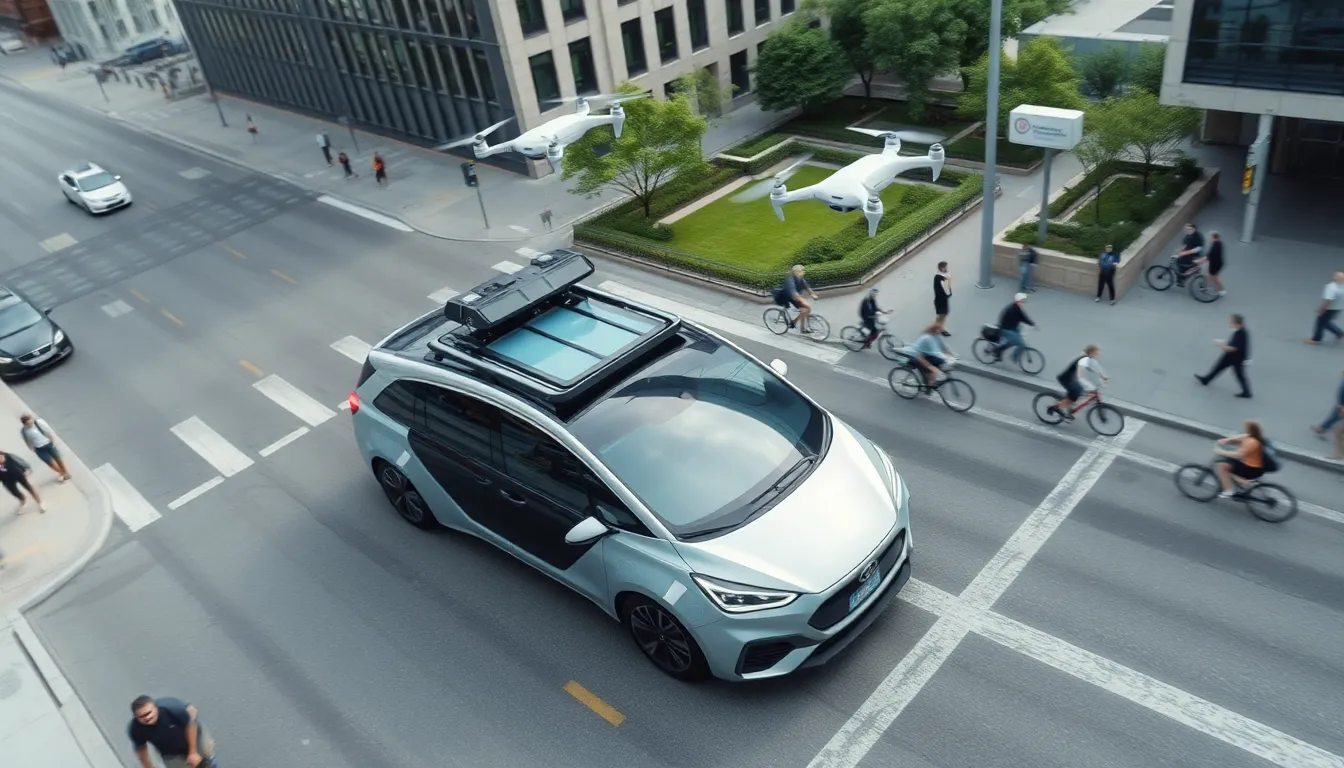Imagine a world where cars drive themselves, drones deliver your pizza, and robots navigate through crowded streets without breaking a sweat. Welcome to the era of autonomous navigation, where technology takes the wheel—literally! This fascinating field is transforming how we think about travel and logistics, promising not just convenience but also safety and efficiency.
Gone are the days of navigating with a paper map or relying on your friend’s questionable sense of direction. Autonomous navigation systems harness cutting-edge algorithms and sensors to create a seamless journey. Whether it’s a self-driving car gliding through traffic or a delivery drone soaring above, the future is bright—and it’s not just because of the headlights! Buckle up as we explore the ins and outs of this thrilling technology that’s set to change our lives in ways we can only imagine.
Table of Contents
ToggleOverview of Autonomous Navigation
Autonomous navigation refers to the ability of vehicles and systems to move from one point to another without human intervention. Self-driving technology plays a crucial role in this domain, allowing cars to interpret their surroundings using sensors such as LiDAR, cameras, and radar. Delivery drones utilize similar technologies to navigate efficiently, demonstrating the versatility of autonomous systems.
Advanced algorithms enable these technologies to analyze data in real-time, making split-second decisions based on changing conditions. Machine learning enhances these algorithms, allowing systems to adapt to various environments. Road safety improves significantly as autonomous navigation eliminates human errors, a leading cause of accidents.
Various industries are exploring autonomous navigation. In agriculture, drones assist with crop monitoring, providing farmers with precise data for better decision-making. Logistics companies utilize robots for warehouse management, optimizing storage and delivery processes.
Regulatory frameworks evolve alongside technological advancements. Governments are working to establish guidelines that ensure safety and reliability. Public acceptance of autonomous systems influences the extent of their integration, shaping the future of mobility.
With ongoing research and investment, innovations in autonomous navigation continue to emerge. New advancements promise enhanced precision and efficiency in navigating complex environments. As a result, the potential for widespread adoption across industries increases, signaling a transformative shift in how goods and people move.
Key Technologies Behind Autonomous Navigation

Autonomous navigation relies on cutting-edge technologies to enhance safety and efficiency. Key components include sensors, perception systems, and machine learning algorithms.
Sensors and Perception Systems
LiDAR, cameras, and radar serve as essential sensors in autonomous systems. Each device collects data about the environment, providing a comprehensive view of surroundings. LiDAR produces high-resolution 3D maps, while cameras capture visual information for object recognition. Radar detects distance and speed, particularly in adverse weather conditions. These sensors work together to create a reliable perception system that enables real-time analysis of obstacles and routes. This integration reduces potential hazards and supports accurate navigation in complex environments.
Machine Learning Algorithms
Machine learning algorithms significantly enhance the decision-making capabilities of autonomous navigation systems. These algorithms process large data sets to identify patterns and predict outcomes, improving the vehicle’s response to dynamic conditions. Reinforcement learning enables systems to learn from experience, adapting to new scenarios. Advanced neural networks also optimize perception tasks, such as image classification and object detection. Continuous learning keeps systems updated, ensuring they perform efficiently in evolving environments. Integration of these algorithms not only boosts reliability but also promotes safer navigation across various applications.
Applications of Autonomous Navigation
Autonomous navigation technologies find diverse applications across multiple sectors. These systems enhance efficiency, accuracy, and safety in both consumer and commercial operations.
Consumer Vehicles
Self-driving cars exemplify autonomous navigation in consumer vehicles. Equipped with sensors like LiDAR and cameras, these cars interpret surroundings to ensure safe driving. They analyze data in real time, allowing split-second decisions. These vehicles reduce reliance on human drivers, consequently decreasing accident rates significantly. Major manufacturers embrace this technology, accelerating its development and integration into everyday life. As road infrastructure evolves, the impact of autonomous navigation in consumer vehicles grows, promising an exciting future for travelers.
Aerospace and Drones
Autonomous navigation significantly improves efficiency in aerospace and drone applications. Drones equipped with advanced GPS and vision systems navigate complex environments with precision. They conduct tasks ranging from agricultural monitoring to package delivery, optimizing time and resources. This technology allows for accurate route planning and obstacle avoidance, enhancing operational safety. Regulatory authorities increasingly recognize the potential of such drones, paving the way for broader applications and integration into airspace systems. The effectiveness of autonomous navigation transforms traditional practices, enabling faster, safer, and more cost-effective solutions.
Challenges and Limitations
Autonomous navigation faces several challenges and limitations that impact its effectiveness and adoption. Understanding these issues is vital for advancing this technology.
Technical Hurdles
Technical hurdles encompass various aspects, including sensor limitations and algorithmic complexities. Sensors like LiDAR, cameras, and radar can struggle in adverse weather conditions, leading to decreased accuracy. Algorithms must process vast amounts of data quickly to ensure real-time decision-making. Computational power plays a crucial role; inadequate processing capabilities can slow response times. Additionally, mapping and localization systems must maintain high precision to navigate complex environments. The integration of various technologies is necessary to create a reliable and efficient system that can adapt to changing conditions.
Ethical Considerations
Ethical considerations surface as autonomous navigation technology evolves. Issues around decision-making in critical scenarios arise, posing questions about how systems prioritize safety. Various stakeholders must address liability in accidents involving autonomous vehicles. Public trust is fundamental; transparency in how decisions are made can influence acceptance. Data privacy concerns also come into play, as these systems often collect and store personal information. Societal impacts such as job displacement within driving professions must be evaluated. Engaging with communities can foster understanding and address these ethical concerns effectively.
Future Trends in Autonomous Navigation
Ongoing advancements in autonomous navigation promise greater integration into everyday life. Self-driving vehicles are evolving, with companies rapidly developing technologies that enhance safety and efficiency. Major automotive manufacturers are already testing vehicles that leverage real-time data for improved navigation capabilities.
Drones continue to expand their role in sectors like agriculture and logistics. These flying machines utilize sophisticated algorithms to streamline delivery processes, increasing speed and accuracy. As regulations adapt, more industries are likely to implement these technologies, leading to broader applications and acceptance.
Machine learning plays a vital role in the evolution of navigation systems. Continuous advancements enable systems to learn from real-world experiences, making them more adaptable to changing environments. Each iteration improves decision-making skills, enhancing performance in complex situations.
Collaboration among technology stakeholders is essential for innovation. Partnerships between automotive, aerospace, and tech companies are expected to drive rapid advancements and create synergies. This cooperative approach fosters the development of comprehensive solutions that address challenges in navigation and safety.
Data privacy and security remain crucial areas of focus as technologies expand. Developers are prioritizing robust frameworks to protect user information. These measures will help build public trust and promote wider adoption of autonomous systems.
Ethical considerations will similarly shape the future of autonomous navigation. Addressing concerns about decision-making in critical situations will become increasingly important. Engaging with communities can significantly nurture understanding and support for autonomous technologies.
Investment in infrastructure will also play a key role in enabling the effectiveness of autonomous navigation. Smart traffic systems and updated road networks cater to the needs of self-driving vehicles. With this foundational support, societies can reap the full benefits of these transformative technologies.
The future of autonomous navigation is poised to redefine how people and goods move. With advancements in technology and ongoing research, the potential for safer and more efficient transportation systems is immense. Industries are already witnessing the benefits of these innovations, from self-driving vehicles to delivery drones, transforming traditional practices.
As regulatory frameworks adapt and public acceptance grows, the integration of autonomous navigation into everyday life will continue to evolve. Addressing ethical concerns and ensuring data privacy will be crucial in fostering trust. The journey toward a fully autonomous future is just beginning, and its impact will resonate across various sectors for years to come.





